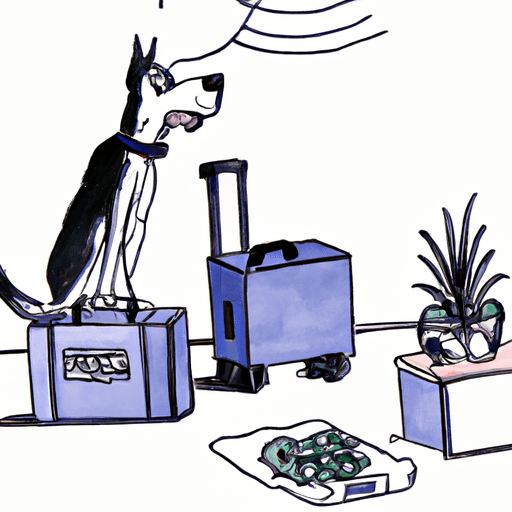As a caregiver, your role is multifaceted. In addition to providing emotional and physical support to your loved one, you also need to ensure their surroundings are safe and conducive to their recovery. Sometimes, this might involve understanding and learning about areas you never thought you’d explore. Like the capabilities of drug-sniffing dogs, for instance.
H2: The Science Behind a Dog’s Nose
A canine’s olfactory system is beyond impressive. Their sense of smell is estimated to be between 10,000 to 100,000 times more sensitive than ours. This is because their nose functions differently from ours. While we primarily use our noses for breathing, dogs have a separate olfactory area designated for scent processing.
Let’s break down the science behind a dog’s nose:
- Olfactory Receptors: Dogs have around 300 million olfactory receptors in their noses, compared to about six million in humans.
- Scent-Separation Ability: Dogs can separate scents, allowing them to identify individual ingredients within a substance.
- The Jacobson’s Organ: This auxiliary olfactory sense organ enables dogs to detect pheromones, adding another layer to their scent perception.
H2: The Training of Drug-Sniffing Dogs
Training a dog to become a drug-sniffing dog involves intensive conditioning and reinforcement. The dogs are not addicted to drugs or inherently know what drugs smell like. Instead, they associate certain scents with their favorite toys during training.
The process goes as follows:
- The dog’s favorite toy is made to smell like the drug they’re being trained to detect.
- The dog is then encouraged to find the toy.
- When the dog successfully finds the toy, it is rewarded with playtime.
This process is repeated until the dog associates the smell of the drug with the joy of play and reward.
H2: What Substances Can Drug Dogs Detect?
You might be wondering what types of substances these dogs are capable of detecting. Here’s a non-exhaustive list:
- Marijuana
- Cocaine
- Methamphetamine
- Heroin
- Ecstasy
- LSD
It’s important to remember that each dog is typically trained to detect a specific substance, not all at once.
H2: The Limitations and Controversies
Despite their impressive skills, drug-sniffing dogs are not infallible. They can make mistakes, and their effectiveness can depend on the skills and ethics of their handlers. Some of the limitations and controversies include:
- False Positives: Dogs can mistakenly alert to a substance that is not present.
- Handler Bias: Dogs can pick up on their handler’s unconscious cues, leading to potential false alerts.
- Legal and Ethical Concerns: The use of drug-sniffing dogs raises questions about privacy rights and consent to search.
H2: FAQ
Q: Can drug-sniffing dogs detect prescription drugs?
A: Generally, drug dogs are not trained to detect prescription medication as it is legal.
Q: Can drug dogs smell drugs inside a human body?
A: In most cases, drug dogs are trained to detect drugs hidden in objects, not inside human bodies.
Q: Do drug dogs get addicted to drugs?
A: No, the dogs are trained to associate the smell of drugs with their toys, not to consume the drugs.
Q: How long does their training take?
A: It varies, but typically, it takes between six months to a year of intensive training.
Remember, knowledge is power. Understanding the capabilities of drug-sniffing dogs can provide a unique perspective on keeping your loved ones and their environment safe.



